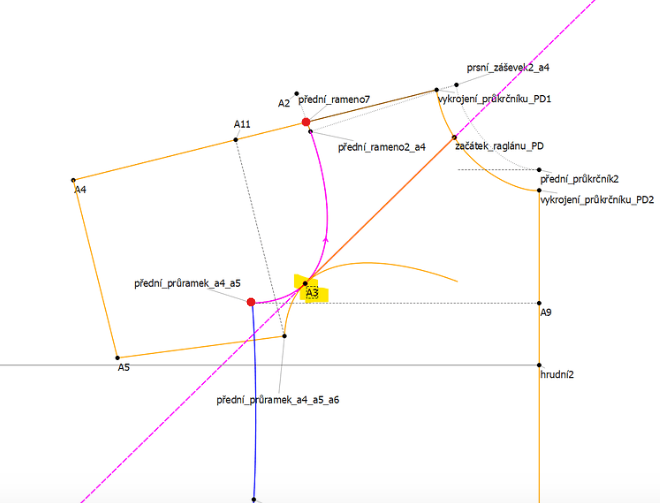Ich denke, dass du bereits den Punkt A3 so setzen musst, dass er bei den verschieden Größen sich der Größe anpasst - in Anlehnung an die Brustweite und der Schulter. Das geht nur, wenn du für die Brustweite und deine Schulterlänge Formeln verwendest die auf die Maßveränderungen eingehen. Dann bleibt der Punkt A3 in der Relation und muss nicht bearbeitet werden. Du kannst dann deine Linie um Punkt A3 und začátek_raglánu_PD ziehen und darüber den Armausschnitt spiegeln.
